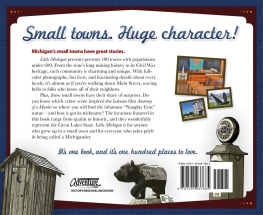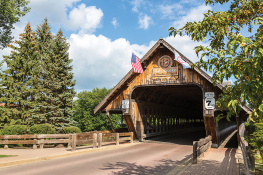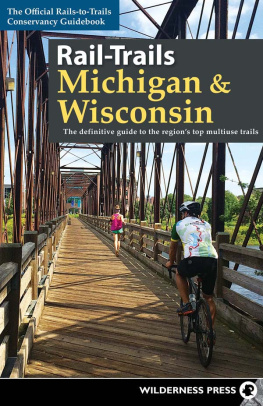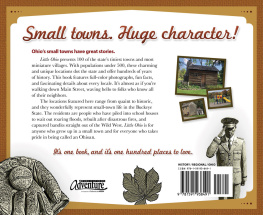

Dedication
For my family, who believe in me even when I doubt.
Acknowledgments
This book could not have happened without the help of many people. The following people were instrumental in writing this book: Virginia Burleson, Kari DeVerney, Cathryn Fitz-Jung, Linda Gutzki, Mike Hosey, Robert Houseman, Judy Jones, Lynn Jordan, Shaun Lausby, Jerry McDiarmid, Don Moore, Dick Morgan, Julie Morgan, Jane Mueller, Janette Weimer, JoAnn Zerilli. In addition, Id like to thank all of the local historical societies from these one hundred towns for giving me information I could not have found anywhere else, and for the residents that stopped on the street to answer quick questions and point me toward interesting places. There truly are too many of you to name.
Id also like to thank Brett Ortler and the entire team at Adventure Publications, without whom this book would not be nearly as much as it is. Finally, Id like to thank Steve Houghton for accompanying me on many of the long hours of driving I put into researching this book, and Melissa Houghton for keeping me company while I did much of the writing and editing.
Photo Credits
All photos by Kathryn Houghton
Cover and book design by Jonathan Norberg
Edited by Brett Ortler
10 9 8 7 6 5 4 3 2 1
Little Michigan: A Nostalgic Look At Michigans Smallest Towns
Copyright 2018 by Kathryn Houghton
Published by Adventure Publications
An imprint of AdventureKEEN
(800) 678-7006
www.adventurepublications.net
All rights reserved
Printed in the China
ISBN 978-1-59193-768-5 (pbk.); ISBN 978-1-59193-769-2 (ebook)
Table of Contents
Introduction
When I travel outside of Michigan, people generally think they know two sure things about my state. First, they know about the perceived tragedy of Detroit and, second, that its cold and we get a lot of snow. My first winter as a graduate student in Spokane, Washington, saw more than 90 inches of snow fall, and people would tell me how lucky I was that I was used to getting so much snow. When I told them that no, we didnt often get winters like thatat least not in the Lansing area, where I grew upthey never quite believed me. I would get defensive for my state. Michigan was nothing like what they thought; Detroit isnt a stain upon our identity, and we arent these mythical winter beings that are used to driving in a few feet of snow. I chose to go to Washington for graduate school so that I could get away from Michigan, but the more I found myself defending and describing my home state, the more I missed it. I realized that Michigan hadnt just been my homeit would always be my home. The day after I graduated, I moved back.
I take great pride in my state, but for a long time I barely knew more than my out-of-state friends. To me, Michigan was Lansing and its suburbs, it was Michigan States campus and the interstate rivalry with the University of Michigan, it was lakes and vacationing up north. It was, in a sense, the same thing outsiders saw.
Then I started researching this book. The first town I visited was Pewamo, a town Id never before visited or even driven through, though it was only forty minutes away from where Id grown up. It was a sunny September day, and I decided to walk around, taking notes on what I saw and photographing some of the buildings. Within five minutes, the first person approached me. He was taking a break from a bike ride and hed noticed me walking around. I thought at first that he was going to challenge me on my right to be there, an outsider in this small and closeknit community.
Instead, he wanted to know if he could help in any way.
It was like that everywhere I went. People smiled and said hello. They pointed me toward their towns hidden gems and told me stories about people and events from the past, some of which are now told here in this book.
What I found most remarkable, however, was the enthusiasm of the residents of these small towns. When I told them I was from the Lansing area, and that I worked at Michigan State, their enthusiasm became shaded with something almost akin to disbelief. I didnt understand at first, and then it hit me that, to them, I was the same as the out-of-staters I met in graduate school. Sure, I was from Michigan, but the town where Id grown up, the town Id called a small town until I started working on this book, had 11,000 people. Small town indeed.
As I continued my work on this book, a second pattern began to emerge. Usually the people I spoke with were in their 60s or 70s. Theyd lived a lot of the towns history, seen so many changes. Theirs were the hands that had shaped their communities, both during the good days and the challenging ones, and they werent sure who would be left to do so once they were gone. The younger generations, they told me, were moving away, and most of those who stayed were much more interested in the communitys present and future than in its past.
I never found the courage to admit it to the people I spoke with, but before I started working on this book, I was much the same way. But Ive learned that it matters immensely where weve been and where we come from. Ive learned that to truly understand and appreciate my state, I need to hear so many more of its stories than simply those told in the Lansing suburbs. I need to hear the stories that often go overlooked by any but those who lived them. It is stories that tell us who we are.
Today, I see Michigan in a different light. I see it as a vibrant and tenacious state with so many different people and communities. I see it as a place with a humble past and a dignified future. Its still my home, but its now a bigger and more varied home than it was before. As you read this book, I hope you discover some of the same things that I did and, in doing so, that Michigan feels a bit more like home, whether youve lived here all your life or only visited for a day. Welcome to Michigan. We have so much to tell you.
Locator Map
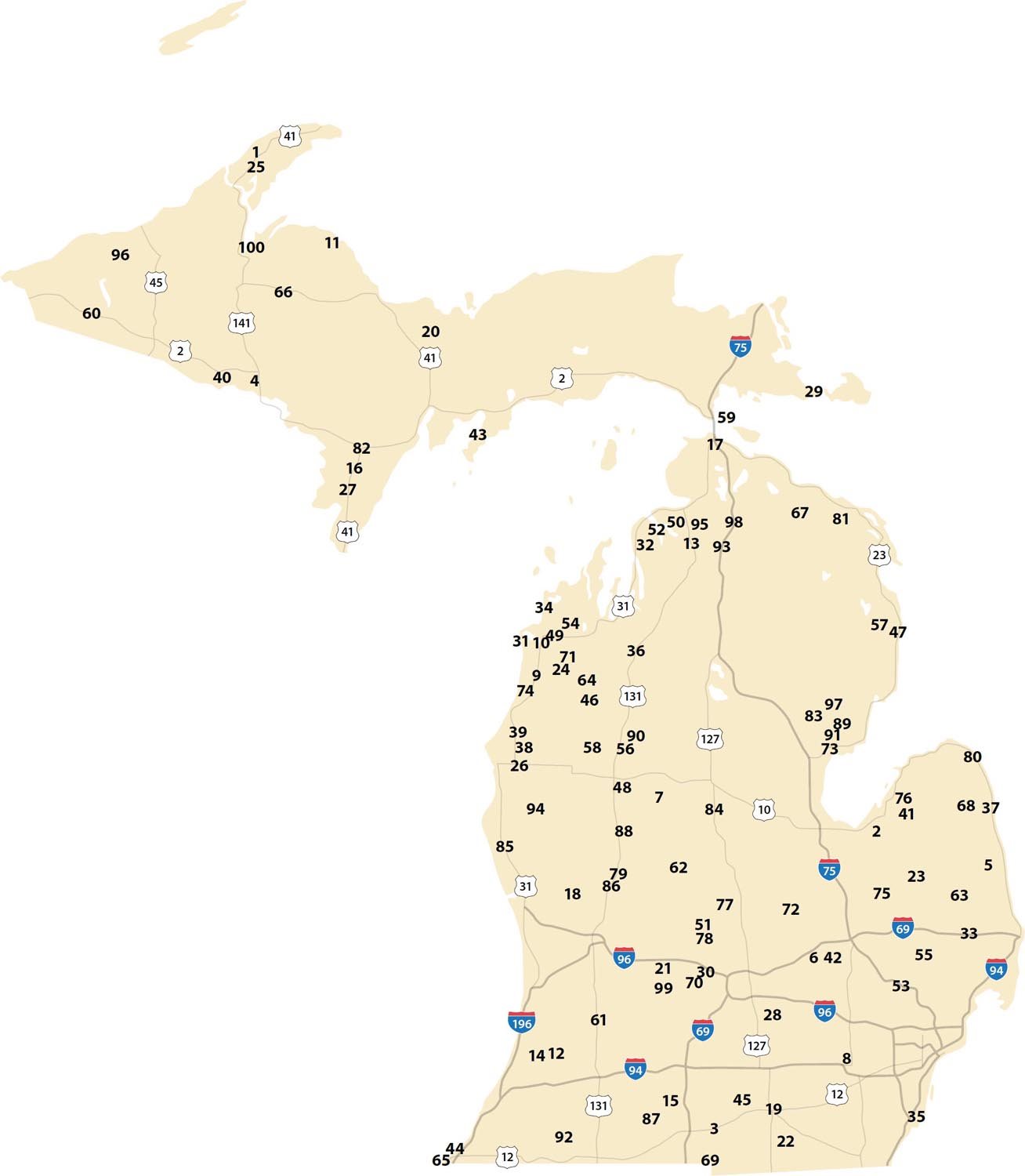
Ahmeek
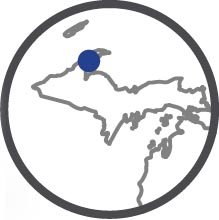
Population: 146
INSETS L to R: The old streetcar station now houses a vacation rental, an ice cream store, and a nature center A plaque commemorating Gabriel J. Chopp, a late Ahmeek resident after whom the local park is named Some of the playground equipment at Gabriel Chopp Park The Ahmeek Village Hall
The name Ahmeek comes from the Ojibwe word for beaver, though a closer spelling of the word might be Ahmuk. At its founding, there was an abundance of beavers in the area.
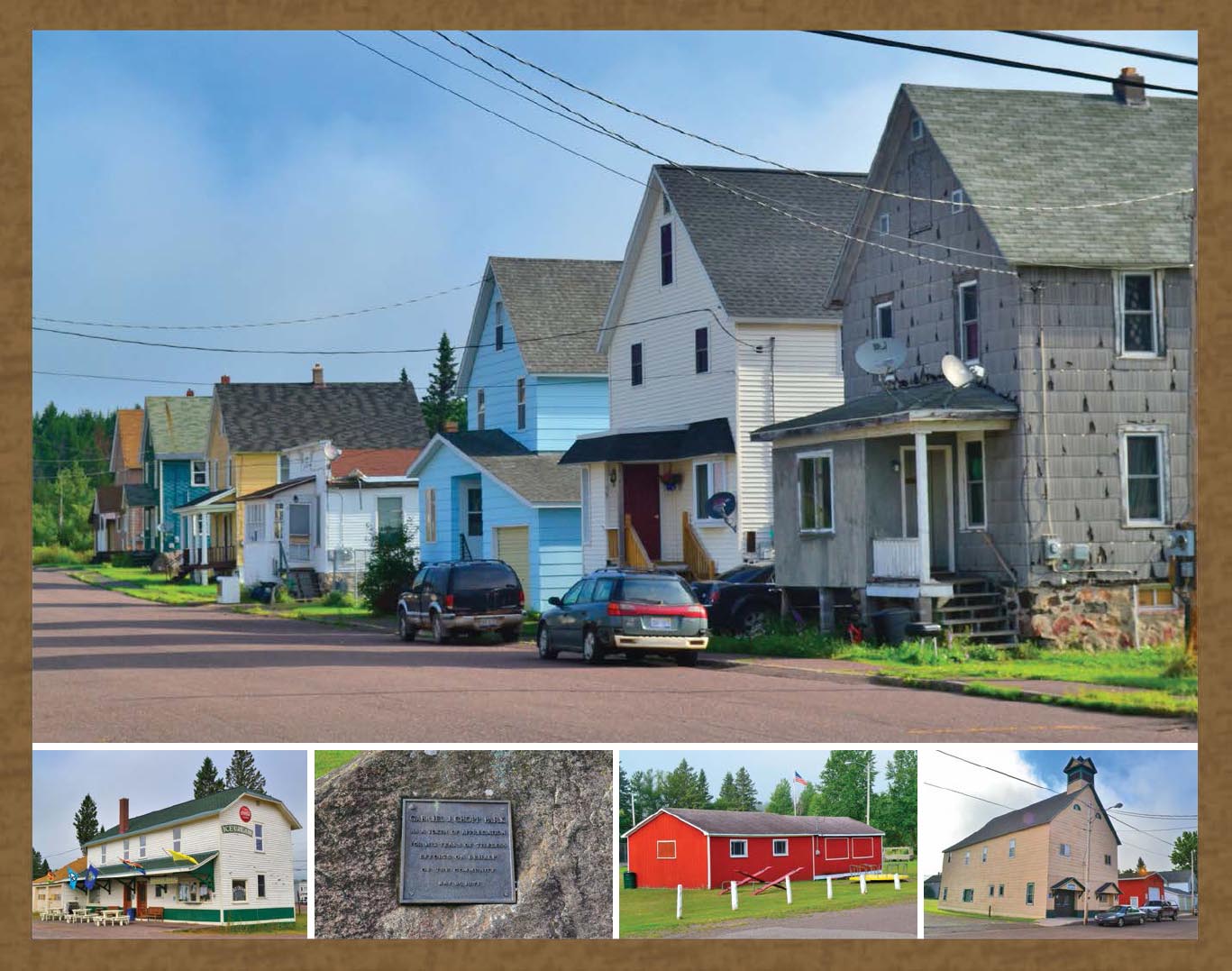
TOP: A row of company houses built by the Ahmeek Mining Company in the early 1900s
The Last Manned Lighthouse
ADVANCES IN TECHNOLOGY can come with the benefits of added convenience and decreased cost, but they can also cause once-common ways of life to all but disappear. For the Great Lakes, lighthouse keeping is one occupation that has disappeared. Ahmeek is home to the last manned lighthouse that was built on the lakes. Built in 1917, the Sand Hills Lighthouse, like lighthouses almost everywhere, fell victim to electrification and automation. He and his wife, Mary, restored and renovated the property and opened a bed and breakfast at the lighthouse, which is now listed on the National Register of Historic Places.
Next page
